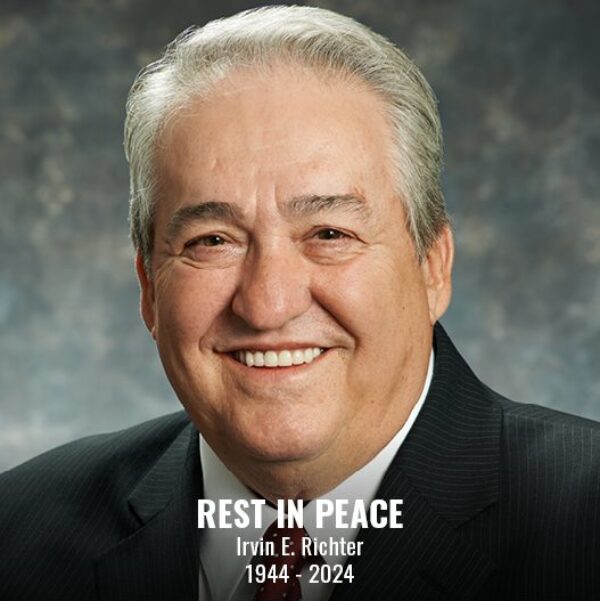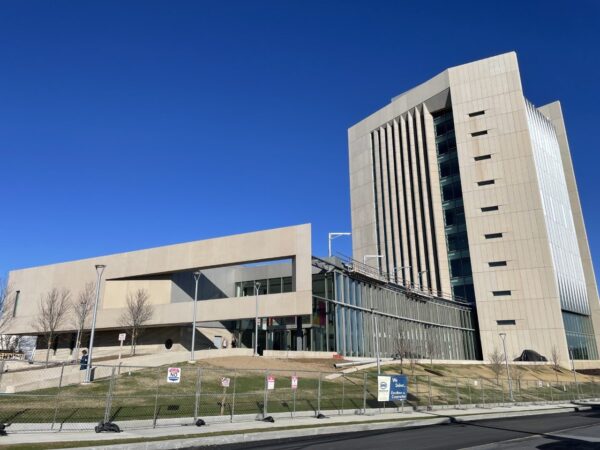
July 15, 2024 | Articles
Construction’s Digital Transformation & The Tools of Modern Project Management

Hill will move from suburban Marlton, New Jersey to bustling Philadelphia in early May. More than 120 professionals from the Marlton office, Hill’s home for nearly 15 years, along with 60 professionals from an existing Philadelphia office, will occupy the 16th and 17th floors at One Commerce Square, located at 20th and Market Streets. The prestigious location, in the heart of the city’s financial district, will give the firm more room to grow. However, the tight urban setting and the logistics involved in hard-wiring floors so high above the ground makes building a sprawling data center difficult and expensive. Advances in cloud computing are making in-house data centers, like the one Hill will leave behind in Marlton, a thing of the past. A co-located data center will improve Hill’s current IT infrastructure making it faster, more secure and will provide a platform for growth for years to come.
“By leveraging the move out of Marlton, we can take advantage of the latest advances in co-location computing,” said Michael Petrisko, Hill Senior Vice President and Chief Information Officer.
The heart of Hill’s new corporate data center will be in a hardened co-location, Petrisko added. A co-location is a secure, redundant suite of data centers that securely share environmental resources. “This allows for lower cost, yet higher levels of security, redundancy and network speed,” he said.
Notably, the co-location will be housed in a 1930s-era building that is on the National Register of Historic Places and was said to be the U.S.’s largest commercial warehouse when it was built. The Terminal Commerce Building, located at Broad and Callowhill streets, about 10 blocks from Hill’s new headquarters, also formerly housed the U.S. Army Induction Center until 1973. Prior to that, the massive building was reportedly used to build tanks during World War II. Its inherent size and strength, with four-foot-thick walls and other remnants of its Army days, make the building perfect for its current use as a “carrier hotel,” Petrisko said.
Hill’s jump to using a co-location had long been considered, but was pushed to the top of the agenda once Hill’s move to Philadelphia was assured.
An increasing number of companies of Hill’s size are opting to take their data centers to co-location facilities. Data centers traditionally house computer servers that need to be kept at constant temperatures behind thick, protective walls, which are expensive to build and maintain. As both natural disasters and new types of cyber threats continue to rise, the need for companies have data-redundant, i.e. to house precious data in more than one location, is essential. Should a disaster arise, the co-location approach offers a consistent, effective recovery plan.
The co-location facilities are more secure than standard office buildings and offer efficiencies of many companies sharing the facilities, without the inherent cost of building, owning and maintaining our own data center, and the move was the perfect opportunity to take advantage of this technology.
Moving to a cloud environment also will allow Hill to have greater inter-connectivity among its 4,600 professionals in more than 100 offices throughout the world, Petrisko said. “The highly redundant and direct internet access within the co-location will allow Hill to use tier-one cloud providers to interconnect our global corporate data centers, as well as users in remote locations,” he said.
While not every Hill professional will fully appreciate the intricacies of the firm’s heightened IT capabilities, they’ll like the faster speed and easier connection to their colleagues, whether they’re in a high-rise in São Paulo, Brazil or a job-site trailer in Gurgaon, India.
“In essence, the decision to move to co-location came down to two factors: cost and effectiveness,” Petrisko said. “The co-located data center will cut our maintenance costs in half and double our data speed, while providing a more secure environment for our precious global data.”
by Tricia M. McCunney, Hill International
Share

July 15, 2024 | Articles
Construction’s Digital Transformation & The Tools of Modern Project Management

July 10, 2024 | Articles
GC/CM at Post Falls: Managing Avista’s North Channel Dam Rehabilitation Project

June 23, 2024 | Articles
Irv Richter – An Innovator, A Pioneer, A Leader (1944 – 2024)

June 14, 2024 | Articles
Environment of Care Standards – Meeting the Challenge (Part Two)

June 13, 2024 | Articles
PMO for Public Transit Project Success: The Reopening of Philadelphia’s Franklin Square Station

June 7, 2024 | Articles

May 17, 2024 | Articles
Hill Interim Federal Market Sector Leader Jane Penny Receives Golden Eagle Award

April 11, 2024 | Articles
A Model Move: Managing Move-In at the Sylvia H. Rambo U.S. Courthouse
We and use cookies and other tracking technologies to improve your experience on our website. We may store and/or access information on a device and process personal data, such as your IP address and browsing data, for personalised advertising and content, advertising and content measurement, audience research and services development. Additionally, we may utilize precise geolocation data and identification through device scanning.
Please note that your consent will be valid across all our subdomains. You can change or withdraw your consent at any time by clicking the “Consent Preferences” button at the bottom of your screen. We respect your choices and are committed to providing you with a transparent and secure browsing experience.
| Cookie | Duration | Description |
|---|---|---|
| cookielawinfo-checbox-analytics | 11 months | This cookie is set by GDPR Cookie Consent plugin. The cookie is used to store the user consent for the cookies in the category "Analytics". |
| cookielawinfo-checbox-functional | 11 months | The cookie is set by GDPR cookie consent to record the user consent for the cookies in the category "Functional". |
| cookielawinfo-checbox-others | 11 months | This cookie is set by GDPR Cookie Consent plugin. The cookie is used to store the user consent for the cookies in the category "Other. |
| cookielawinfo-checkbox-necessary | 11 months | This cookie is set by GDPR Cookie Consent plugin. The cookies is used to store the user consent for the cookies in the category "Necessary". |
| cookielawinfo-checkbox-performance | 11 months | This cookie is set by GDPR Cookie Consent plugin. The cookie is used to store the user consent for the cookies in the category "Performance". |
| viewed_cookie_policy | 11 months | The cookie is set by the GDPR Cookie Consent plugin and is used to store whether or not user has consented to the use of cookies. It does not store any personal data. |


